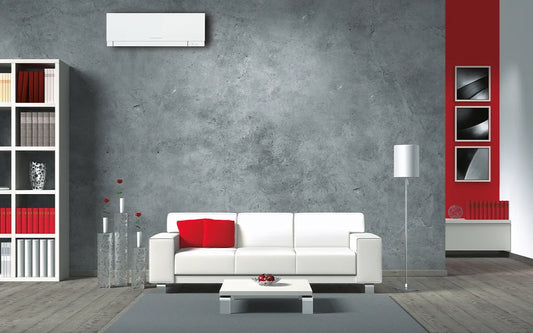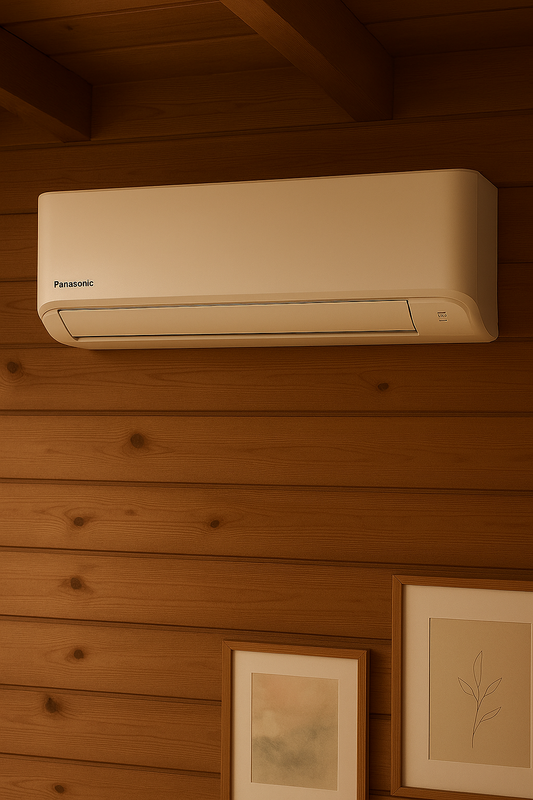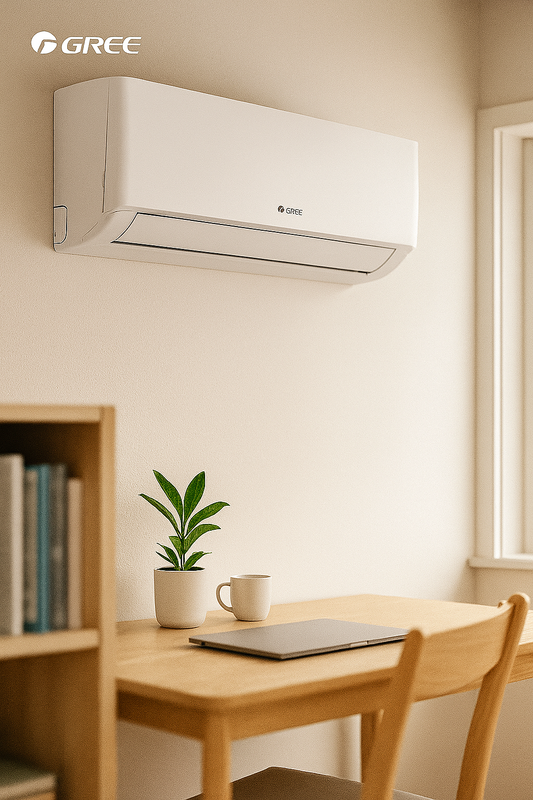AC Kyla: En Guide till Effektiv Kylning
Välkommen till vår guide om AC kyla! I denna artikel kommer vi att utforska definitionen, fördelarna, användningsområdena, relaterade tekniker och vanliga frågor kring AC kyla. Låt oss dyka djupare in i ämnet för att förstå dess betydelse och tillämpningar.
Definition och Bakgrund
AC kyla står för luftkonditionering och är en process som syftar till att kontrollera och reglera temperaturen, fuktigheten och ventilationen i en inomhusmiljö. Detta uppnås genom att avlägsna värme från inomhusluften och föra in kallare luft, vilket skapar en bekväm och hälsosam miljö för människor och maskiner.
Historiskt sett har användningen av AC kyla varit avgörande för att skapa lämpliga arbets- och livsmiljöer, särskilt i områden med extrema klimatförhållanden. Tekniken har utvecklats avsevärt under årens lopp och är nu en integrerad del av byggnadssystem och fordon.
Fördelar och Användningsområden
AC kyla erbjuder en rad fördelar, inklusive:
- Reglering av inomhustemperaturen för komfort och produktivitet.
- Avlägsnande av fuktighet för att förhindra mögelbildning och förbättra luftkvaliteten.
- Kylning av elektroniska enheter för att förhindra överhettning och prestandaproblem.
- Skapande av optimala förhållanden för medicinska och vetenskapliga laboratorier.
Användningsområden för AC kyla inkluderar bostäder, kommersiella byggnader, fordon, industrianläggningar och hälso- och sjukvårdsinrättningar.
Relaterade Tekniker, Begrepp eller Variationer
Några relaterade tekniker och begrepp inom AC kyla inkluderar:
- Central luftkonditionering: System som kyler hela byggnader genom ett centralt enhetssystem.
- Split-system: System som består av en inomhusenhet och en utomhusenhet för att kyla en specifik zon eller rum.
- Värmepumpar: Enheter som kan användas för både uppvärmning och kylning av utrymmen.
Vanliga Frågor (FAQ)
Här är några vanliga frågor om AC kyla:
Fråga: Hur ofta bör AC-system underhållas?
Svar: AC-system bör genomgå regelbunden service och underhåll för att säkerställa optimal prestanda och lång livslängd.
Fråga: Vilken temperatur anses vara optimal för inomhusmiljöer?
Svar: Den rekommenderade inomhustemperaturen för komfort varierar, men vanligtvis ligger den mellan 20-22 grader Celsius.
Sammanfattning
I sammanfattning är AC kyla en avgörande teknik för att skapa bekväma och hälsosamma inomhusmiljöer. Genom att reglera temperaturen, fuktigheten och ventilationen möjliggör AC kyla en mängd olika tillämpningar inom bostäder, kommersiella byggnader och industriella miljöer.
Vi hoppas att denna guide har gett dig en djupare förståelse för AC kyla och dess värde i dagens samhälle.
Impact of AC Cooling on Energy Consumption
One important aspect to consider when discussing AC cooling is its impact on energy consumption. While AC systems provide comfort and convenience, they can also contribute significantly to energy usage, especially in large-scale applications. Understanding the energy implications of AC cooling is crucial for implementing sustainable and efficient solutions.
Energy-Efficient AC Technologies
To mitigate the energy consumption associated with AC cooling, various energy-efficient technologies have been developed:
- Variable Refrigerant Flow (VRF) systems: These systems optimize refrigerant flow based on the specific cooling needs, resulting in reduced energy waste.
- High-efficiency AC units: Modern AC units are designed to operate with minimal energy consumption while delivering effective cooling performance.
- Smart thermostats: These devices enable precise temperature control and scheduling, leading to energy savings without compromising comfort.
Sustainable Cooling Practices
In addition to technological advancements, sustainable cooling practices can further minimize the environmental impact of AC systems:
- Proper maintenance: Regular servicing and cleaning of AC units can improve efficiency and reduce energy usage.
- Natural ventilation: Utilizing natural airflow and ventilation techniques can supplement AC cooling, especially in moderate climates.
- Thermal insulation: Adequate insulation in buildings can prevent heat gain, reducing the workload on AC systems.
Case Study: Green Building with Integrated Cooling
A notable example of sustainable AC cooling is the integration of green building principles with advanced cooling technologies. Green buildings leverage passive cooling strategies, such as orientation, shading, and natural ventilation, in combination with energy-efficient AC systems to achieve optimal indoor conditions while minimizing energy demand.
Challenges and Future Trends
Despite advancements in energy-efficient cooling technologies, challenges persist in optimizing AC systems for minimal energy consumption. Addressing issues such as refrigerant emissions, system design, and user behavior is essential for the future of sustainable AC cooling.
Future trends in AC cooling may focus on enhanced automation, advanced materials for heat exchange, and integration with smart grid technologies to further reduce energy usage and environmental impact.
Environmental Impact of AC Cooling
Another critical aspect to consider when examining AC cooling is its environmental impact. While AC systems provide numerous benefits, they also have implications for the environment, including energy consumption, refrigerant emissions, and heat island effects. Understanding and mitigating these impacts is crucial for sustainable and responsible AC cooling practices.
Refrigerant Management and Emissions
Refrigerants used in AC systems can contribute to greenhouse gas emissions if not properly managed. Transitioning to low-GWP (Global Warming Potential) refrigerants and implementing effective leak detection and recovery systems are essential steps in reducing the environmental impact of AC cooling.
Heat Island Mitigation
In urban areas, the concentrated use of AC systems can exacerbate the heat island effect, leading to elevated temperatures and energy demand. Implementing urban planning strategies, such as green spaces, reflective surfaces, and efficient building designs, can help mitigate this effect and reduce the overall environmental impact of AC cooling.
Renewable Energy Integration
To further reduce the environmental footprint of AC cooling, integrating renewable energy sources, such as solar power, into AC systems can offset energy consumption and contribute to overall sustainability. Utilizing clean energy for cooling purposes aligns with global efforts to mitigate climate change and reduce reliance on fossil fuels.
Case Study: Energy-Efficient Cooling in Data Centers
Data centers, critical for digital infrastructure, often face significant cooling challenges due to high heat loads from servers and equipment. Implementing energy-efficient cooling solutions, including advanced airflow management, liquid cooling technologies, and free cooling methods, can drastically reduce the environmental impact of cooling these facilities while maintaining optimal operating conditions.
Regulatory Standards and Compliance
Regulatory agencies and industry standards play a crucial role in shaping the environmental impact of AC cooling. Compliance with energy efficiency regulations, such as SEER (Seasonal Energy Efficiency Ratio) ratings for AC units, and participation in environmental certification programs can drive the adoption of eco-friendly cooling practices.
Conclusion
By addressing the environmental impact of AC cooling through responsible refrigerant management, heat island mitigation, renewable energy integration, and adherence to regulatory standards, stakeholders can contribute to a more sustainable and environmentally conscious approach to AC cooling. Understanding the environmental implications and implementing proactive measures are essential for the future of AC cooling.



